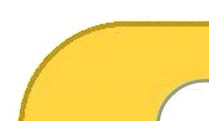

           
|
|
|
|
|
|
 |
|
SEAFLOOR SCIENCES (Code 7430)
The Seafloor Sciences Branch provides the Navy with
the understanding, description, modeling, and quantitative
prediction of marine geological environments in terms that relate to
Navy systems design, construction, and operations. The branch investigates biological, geological,
geochemical, historical, and subsequent diagenetic processes that
control distribution, range, and variability of sediment physical
properties including bathymetry, roughness, and subseafloor
morphology.
|
|
|
|
|
|
|
 |
|
GEOACOUSTICS/GEOTECHNICAL
SECTION (Code 7431)
The Geoacoustics/Geotechnical Section performs
basic and applied research primarily associated with the coastal
benthic boundary layer. Fundamental research topics include
sediment geoacoustic and geotechnical behavior over varying
stress-strain conditions, effects of biological and hydrodynamic
processes on seafloor physical properties and morphology, effects
of sediment microstructure on sediment properties and behavior,
and early diagenetic processes in sediments. Applied research
includes mine burial, sediment acoustic classification,
high-frequency acoustic bottom interaction, characterization of
sediment physical properties and biological remediation.
|
|
|
|
|
|
|

|
|
ELECTRON
MICROSCOPY FACILITY (Code 7431.1)
Performs
basic and applied research in the diverse areas of marine
geosciences, geophysics, physics, materials science, space science,
and microbiology using advanced microanalytical, electron-beam
techniques. The
relationships between formation/alteration mechanisms and resultant
microstructures are studied at the atomic-scale by scanning and
transmission electron microscopy.
For example, natural microstructures represent direct fossil
records of the mechanisms which produced them or caused subsequent
alteration.
|
|
|
|
|
|
 |
|
MARINE
BIOGEOCHEMISTRY
The Marine Biogeochemistry Section conducts basic research
in diverse areas of aquatic and sediment biogeochemistry.
Aquatic sediments are the host to abundant microorganisms,
which oxidize sedimentary organic matter using terminal electron
donors such as dissolved oxygen, nitrate, metal oxides, and
sulfate. Consequently,
sediments can be considered as a dynamic redox reactor, where
metals and nutrients are continuously cycled.
The section also couples geochemistry with microbiological
techniques (molecular biology, DNA technology, and traditional
culturing) to investigate microbial communities and the processes
by which microorganisms transform sediment materials to increase
the understanding of microbial ecology and the ecophysiology of
mineral cycling.
|
|
|
|
|
|
 |
|
SEAFLOOR SENSING
The Seafloor Sensing Group is developing sensor technologies,
signal processing algorithms, data inversion techniques, and data
fusion methodologies for characterization of the seafloor as
required by Naval tactical decision aids.
A primary focus of the team is the exploitation of fleet
tactical sonars for seafloor characterization (a “through the
sensors” approach). Vertically integrated efforts span the gamut from basic
research in acoustic interaction with seafloor sediments through
demonstrations of mature technologies with near-term transitions
to the Naval Oceanographic Office and fleet system.
Current efforts include the demonstration of acoustic
seafloor sediment classification, seafloor imaging, and seafloor
bathymetry with sonars currently installed on fleet mine
countermeasure ships, on nuclear attack submarines, and on
helicopter-towed mine hunting sonars.
The Seafloor Sensing Team crosses branch administrative
boundaries and include elements of NRL Code 7440.4.
|
|
|
|
|
|
|
 |
|
GEOLOGY/GEOPHYSICS
SECTION (Code 7432)
The Geology and Geophysics Group performs
fundamental research in seafloor and subseafloor processes using
geophysical (primarily seismic and acoustic) techniques. Field
measurements, many of which are made by the section's unique
deep-towed multichannel seismic system, DTAGS, are supported by
expertise in wave propagation and fluid flux modeling,
particularly concerning studies of methane hydrates. More applied
research is directed toward inverting the response from
conventional acoustic transducers to obtain seafloor sediment
properties, aiding the speedy geotechnical assessment of
previously unknown, or very dynamic areas. These efforts are also
supported through physical modeling, where exceedingly careful
measurements can be made to corroborate numerical models.
|
|
|
|
|
|

















